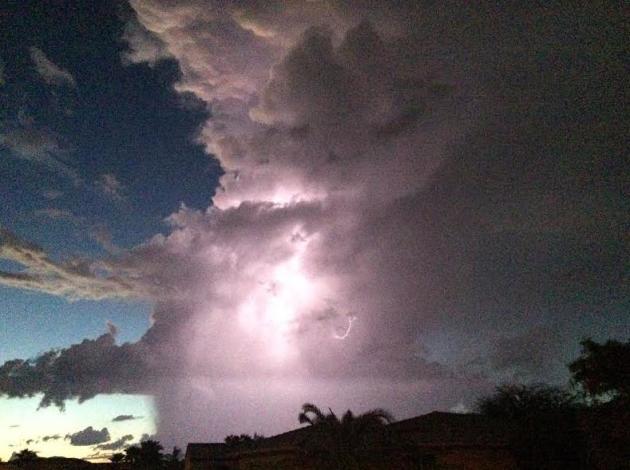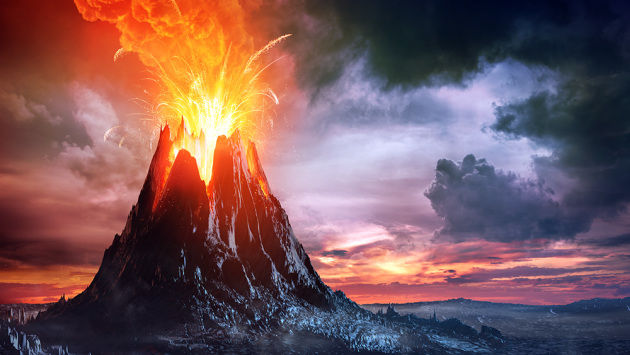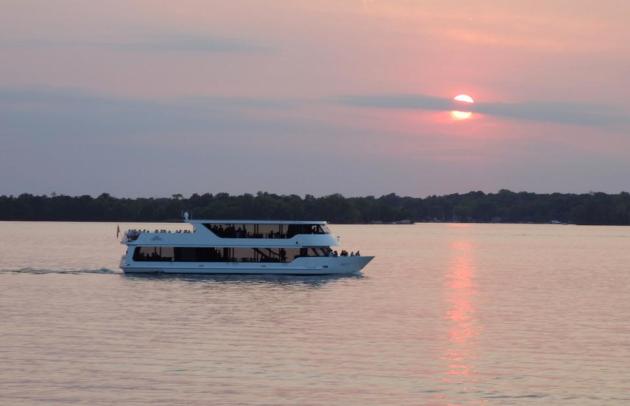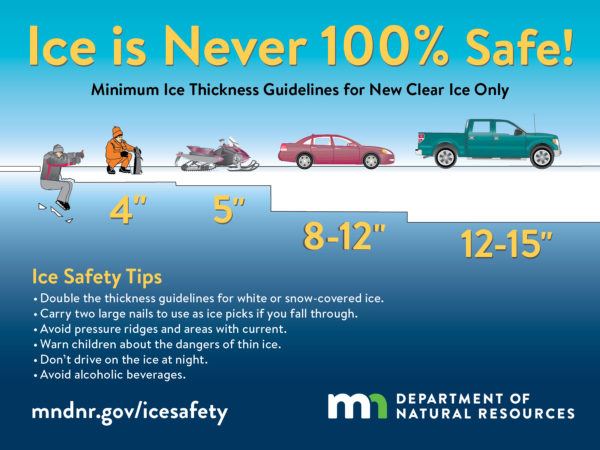Another Thing To be Thankful For: Quiet Weather
A Gastrointestinal Advisory has just been issued. The forecast calls for a 2 inch accumulation of turkey on plates by afternoon; some salting may be necessary. Forks will plow into towering mashed potato drifts. Watch for showers of hot gravy, and cranberry sauce will leave some side dishes slippery. Am I stuffing too much into this outlook? The extended outlook calls for pie, bulging refrigerators, a nap and leftovers. Not necessarily in that order.
Thanksgiving weather in the Twin Cities can be all over the map, quite literally. From 62F in 1922 to -18F in 1880 to 5 inches of snow in 1970.
If the sun stays out for a few hours today we should top 40F; a few degrees above average. A southwest breeze tugs the mercury close to 50F tomorrow, before a few afternoon rain showers herald the approach of a slightly-cooler-front. Minor miracle: the weekend looks dry with no problems getting home on Sunday.
After flirting with 50F again Monday temperatures cool off next week – but nothing arctic in sight. Models hint at a rain-snow mix Wednesday and Thursday. The flow looks more Pacific than Canadian into early December.
December 6: Modified Pacific Air. After a few days at or just above 50F temperatures will cool off the first week of December, but nothing frigid is brewing.
Unstable Ice. With temperatures generally warming in the days to come (40s and low 50s across much of central and southern MInnesota Friday – agaiin Monday and Tuesday of next week) ice on area lakes and ponds will become sketchy and potentially dangerous. Be careful out there.
Best and Worst Times to Travel Over Thanksgiving? GoMN has the dirty details: “Minneapolis (and St. Paul, we assume) is among the cities referenced, with Google’s data showing that the worst time to set off for your Thanksgiving weekend is at 4 p.m. on Wednesday. The best time, it says, is at 5 a.m. on Thanksgiving morning … great, thanks for that Google. Traffic levels rise in the hour or two before 4 p.m. and drop relatively sharply after 6 p.m., so if you leave after 6 there’s a good chance you won’t be too delayed…As for coming home after Thanksgiving, Google suggests the best time traffic-wise to re-enter the Twin Cities is 4 a.m. Friday (again, thanks Google). While that is pretty unrealistic, the time you’re looking to avoid is 3 p.m. Friday afternoon. AAA predicts that just over 50 million Americans will take to the roads for journeys of longer than 50 miles on Thanksgiving – the highest number since 2005…”
Graphic credit: Google Trends.
10 of the Most Dramatic Images From the National Weather Service Final Report on Hurricane Maria. Here’s a clip from The Weather Channel: “The National Weather Service in San Juan has issued its final report on Hurricane Maria. These are some of the most startling maps and photos of Maria’s catastrophic strike on Puerto Rico. Dramatic images in a National Weather Service (NWS) final report on Hurricane Maria are giving us another look at the scope of the devastating impacts the U.S. territory has suffered. The detailed write-up from the NWS in San Juan includes information from both meteorological observations gathered during the hurricane and field surveys after it struck…”
Photo credit: National Weather Service – San Juan, Puerto Rico.

Paid Vacation for Extreme Weather? Get ready for “climate leave”, according to a story at The Columbian: “Even the workplace has to adapt to the warming world. As climate change creates more intense storms, companies have started preparing for work disruptions due to extreme weather. In a sign of the times, Fog Creek, a software company based in New York City, recently announced it would provide up to five days of paid “climate leave” for employees who can’t work because of extreme weather events. If there’s a declared state of emergency, the company will give affected employees even more time. During previous hurricanes, wildfires and other natural disasters, the company let employees take time off on a case-by-case basis. One Miami-based employee had to evacuate during Hurricane Irma, and Sandy displaced most of the company back in 2012. Throughout the storms, Fog Creek continued to pay the staff...”
As World Turns More Slowly, We Face Earthquake Boom, Scientists Warn. This one had me scratching my head (which I’m doing more often these days) but just in case they’re right, here’s a clip from HuffPost: “…It seems contradictory, but a minuscule slowing of the Earth’s rotation over years, which can extend the length of a day by a millisecond or more, appears to be linked to an increase in major quakes. Roger Bilham of the University of Colorado and Rebecca Bendick of the University of Montana say that historical data since 1900 clearly reveal a “strong” link between major global earthquake activity and a slight slowing of the Earth’s rotation for five or six years. That has occurred approximately every 32 years. If that pattern continues, the number of powerful quakes in the coming year could triple, according to the researchers. “On five occasions in the past century, a 25 [to] 30 percent increase in annual numbers of earthquakes [of a magnitude 7.0 or greater] has coincided with a slowing in the mean rotation velocity of the earth,” the scientists noted in a research abstract...”
More perspective from temblor.net.

When Will the Earth Try to Kill Us Again? A little light reading, courtesy of Ars Technica. Here’s a clip: “…This isn’t your regular Vesuvius/St. Helens/Hawaii style volcanism. It’s not even super-volcanoes like Yellowstone or Tambora. I’m talking about something far, far bigger: a rare, epic volcanic phenomenon called a Large Igneous Province or “LIP.” LIPs are floods of basalt lava on an unimaginable scale: the Siberian Traps LIP, which erupted at the end-Permian extinction, covers an area the size of Europe. It’s estimated that over 3 million cubic kilometers of rock were vomited onto the planet’s surface, The end-Triassic Central Atlantic Magmatic Province, stretching from Canada to Brazil into Europe and West Africa, was just as large. Others are similarly gigantic. In the words of Bond and Grasby, “Four of the ‘Big Five’ extinctions are associated with LIPs—too many to be mere coincidence —implying that large-scale volcanism is the main driver of mass extinctions...”
By 2050, There Will Be More Plastic in the Ocean Than Fish. A story at Big Think got me thinking: “…How prevalent is the plastic problem? Consider there are a number of garbage patches throughout the world. Over eight million tons of plastic enter the waste stream each year. 91% of it isn’t recycled. That means it sits in landfills and eventually makes its way to the ocean. It’s also long-lived. Plastic takes 400 years to break down. There’s estimated to be 6.3 billion metric tons of plastic waste on Earth. By the middle of this century ton for ton, they’ll be more plastic in the ocean than fish. All of this we’ve known. What we haven’t know until now, is how deep this oil-based refuse has sunk. We all must pitch in to help stem the flow of plastics into the ocean. What can you do? First, purchase clothing that’s made of 100% natural material, such as cotton, silk, hemp, wool, linen, or cashmere…”
Image credit: Newcastle University.
New Study Reaches a Stunning Conclusion About the Cost of Solar and Wind Energy. ThinkProgress has the article: “In one of the fastest and most astonishing turnarounds in the history of energy, building and running new renewable energy is now cheaper than just running existing coal and nuclear plants in many areas. A widely-used yearly benchmarking study — the Levelized Cost of Energy Analysis (LCOE) from the financial firm Lazard Ltd. — reached this stunning conclusion: In many regions “the full-lifecycle costs of building and operating renewables-based projects have dropped below the operating costs alone of conventional generation technologies such as coal or nuclear…”
Photo credit: Patrick Pleul/dpa via AP file.
China is Winning Electric Cars “Arms Race”. So says an article at CNN Money: “China is outmaneuvering the U.S. and other countries in the global scramble for a vital element for electric cars. As demand for the vehicles surges, Chinese companies have been doing deals around the world to secure supplies of lithium, a silvery-white metal mined from rocks in Australia and brine pools in South America. China is the top market for electric and hybrid cars, accounting for roughly half of global sales, and the government is pushing the development of the industry within its borders. That calls for a lot of lithium, a key component of the vehicles’ batteries...”
Want to Live Longer? Get a Dog. But we knew that already, right? CNN reports: “The benefits that come with owning a dog are clear– physical activity, support, companionship — but owning a dog could literally be saving your life Dog ownership is associated with a reduced risk for cardiovascular disease and death, finds a new Swedish study published Friday in the journal Scientific Reports. For people living alone, owning a dog can decrease their risk of death by 33% and their risk of cardiovascular related death by 36%, when compared to single individuals without a pet, according to the study. Chances of a heart attack were also found to be 11% lower. Multi-person household owners also saw benefits, though to a lesser extent. Risk of death among these dog owners fell by 11% and their chances of cardiovascular death were 15% lower. But their risk of a heart attack was not reduced by owning a dog…”

Happiest Cities in America, According to New Research. Here are a couple of nuggets from a CNN.com story: “…Boulder, Colorado, is the happiest city in America. Second is Santa Cruz, California, and Charlottesville, Virginia, is third. (You can find the rest of the list at NationalGeographic.com and in the cover story of the November issue of National Geographic magazine.) In these places, people feel safe and secure, have a sense of purpose and have joy in their day-to-day lives. In these communities, residents are able to weave together the essential strands of happiness: pride, pleasure and purpose…Our data show that people tend to be happiest close to water (lakes, ocean, rivers) and when they have access to nature, green spaces, and fruits and vegetables…”
These are the Happiest Cities in the United States. The Twin Cities ranks #22, one of only two “Happy Cities” in the Midwest. This is the cover story for National Geographic’s November issue referenced above; here’s an excerpt: “…National Geographic’s list of the 25 Happiest Places in the United States includes cities from Ann Arbor to Austin, San Diego to Charlottesville. At the bottom of the index (not included in our list) are America’s least-happy places, according to the study: Charleston, West Virginia; Fort Smith, Arkansas; and Hickory-Lenoir-Morganton, North Carolina. Research indicates that the variabilities of place play an important role in whether locals feel happy. In happier places, according to Buettner, locals smile and laugh more often, socialize several hours a day, have access to green spaces, and feel that they are making purposeful progress toward achieving life goals. For our index, it tracked factors that are statistically associated with doing well and feeling well; these include feeling secure, taking vacations, and having enough money to cover basic needs…”
Map credit: Jon Bowen, NatGeo Staff.
Since 2010, Sad Songs Have Become Less Common All Over the World. Quartz reports: “Researchers from Indiana University-Bloomington performed analyzed about 90,000 songs in English from different genres (such as classic rock, pop, punk, metal, R&B, and religious) written by musicians around the world, published since 1950, and posted on ultimate-guitar.com. They assessed the chords used in the songs and judged the emotional valence of lyrics using a common social-science scale that rates 222 different words on a scale of 1-9 in terms of their emotional positivity. “Love” for example is a high-valence word that rates a 9, while “pain” is a low-valence word that rates a 1. It turns out that worldwide, moody tunes are on the decline. Low-emotional-valence songs—tunes with negative lyrics—became increasingly common from 1950 to 2010, but since have been less commonly written. The researchers didn’t offer an explanation for the apparent increase in lyrical positivity, saying only that more study is needed…”
Image credit: “Writing the songs that make the whole world sing.” (Creative Commons/Collage el)
31 F. high temperature on Wednesday.
37 F. average high on November 22.
36 F. maximum temperature on November 22, 2016.
November 23, 2003: New London and Little Falls both receive 9 inches of new snow.
November 23, 1983: Heavy snowfall accumulates over most of central Minnesota with snowfall totals from 4 inches to almost 1 foot. Minneapolis received 11.4 inches of snow, while Farmington had 11 inches.
November 23, 1954: Very strong winds over Minnesota lead to considerable damage in downtown Wadena.
THANKSGIVING: Partly sunny and dry. Winds: S 5-10. High: 41
THURSDAY NIGHT: Partly cloudy, temperatures steady or rising. Low: 40
FRIDAY: Mild start, few PM rain showers. Winds: W 10-15. Winds: W 10-15. High: 51
SATURDAY: Mix of clouds and sun, cooler. Winds: NW 7-12. Wake-up: 35. High: near 40
SUNDAY: Partly sunny and milder. Winds: SW 5-10. Wake-up: 28. High: 48
MONDAY: Intervals of sun, milder than average. Winds: S 5-10. Wake-up: 41. High: 51
TUESDAY: Mostly cloudy and cooler. Winds: NE 5-10. Wake-up: 34. High: 42
WEDNESDAY: A cold rain develops may develop. Winds: NE 10-15. Wake-up: 33. High: 39
Climate Stories…
Climate Change Brings Bigger Storms, Increased Rainfall: From Climate Nexus Hot News: “Increased warming will encourage wetter, wilder and more frequent thunderstorms, according to new research. A study published Monday in the journal Nature Climate Change projects that under a business-as-usual emissions scenario, larger storms will help the total amount of rainfall in the US South increase by 80 percent by the end of the century, while the Southwest will see a 60 to 70 percent increase. “We see increases that are beyond our expectations…far beyond our expectations,” the study’s lead author Andreas Prein told the AP. “It looks everything that can go wrong does go wrong concerning flooding.” (AP)
New Study: Larger, More Intense U.S. Storm Complexes on the Way. These are the storm that growl overhead many summer nights, and there’s a chance they may get supersized over time, according to new studies highlighted by Bob Henson at Weather Underground’s Category 6: “…The mammoth clusters of thunderstorms known as mesoscale convective systems (MCSs) could dump up to 80% more water across North America by late this century, according to a study published Monday in Nature Climate Change. The study, “Increased rainfall volume from future convective storms in the U.S.,” found that increased atmospheric moisture in a warming climate will help lead to a 15 – 40% increase in peak MCS rainfall rates, along with a 20 – 70% jump in the rainfall area. Together, these lead to a 30 – 80% boost in the total hourly volume of rain deposited by a typical MCS. “The combination of more intense rainfall and the spreading of heavy rainfall over larger areas means that we will face a higher flood risk than previously predicted,” said the study team, led by Andreas Prein (National Center for Atmospheric Research). “Current investments in long-lived infrastructures, such as flood protection and water management systems, need to take these changes into account to improve climate adaptation practices...”
Graphic credit: “A summary of future changes in MCSs, based on identifying all areas of precipitation rates greater than 5 mm/hr. Characteristics such as translation (speed of storm motion), rain rates, and cloud top heights were tracked for MCSs in the current and future climate. The greatest increases were found for MCS precipitation volume, which is positively related to increasing rain rates and rain areas. Faster-moving storms tend to produce lower volumes of precipitation; in this study, storm motion increased or decreased by less than 20% based on region.” Image credit: Courtesy NCAR and Nature Climate Change, Nature Publishing Group.
Weird Weather We’re Having. Can We Move On From Climate Change Denial? Here’s an excerpt of an Op-Ed at New Richmond News in western Wisconsin that caught my eye: “…Climate change is a real threat to humans and all forms of life on Earth. There is a strong consensus in the scientific community that humans have affected the climate, that changes are accelerating and that they pose an existential threat. There is no doubt that sea level rise is occurring and that severe weather events are becoming more frequent and extreme. Hurricanes Irma, Harvey and Maria, raging wildfires out west, record heat in California, devastating forest fires in Europe, a hurricane battered Ireland and record monsoons in south Asia all occurred this year. Here in Wisconsin, the Birkebiner ski race was cancelled this year for lack of snow. We’ve had five 100-year floods and one 1,000-year flood in Wisconsin in the last six years. Global temperatures have hit record highs for each of the last three years. The carbon dioxide concentration in our atmosphere is now at 407 parts per million, its highest level in at least 800,000 years...”
Photo credit: Jeff Williams, NASA.
Doomsday on Ice. What do we really know about the rate of Antarctic glaciers in the past, and what it means in today’s rapidly warming world? Here’s an excerpt of a story from Eric Holthaus at Grist: “...The ocean floor gets deeper toward the center of this part of Antarctica, so each new iceberg that breaks away exposes taller and taller cliffs. Ice gets so heavy that these taller cliffs can’t support their own weight. Once they start to crumble, the destruction would be unstoppable. “Ice is only so strong, so it will collapse if these cliffs reach a certain height,” explains Kristin Poinar, a glaciologist at NASA’s Goddard Space Flight Center. “We need to know how fast it’s going to happen.” In the past few years, scientists have identified marine ice-cliff instability as a feedback loop that could kickstart the disintegration of the entire West Antarctic ice sheet this century — much more quickly than previously thought. Minute-by-minute, huge skyscraper-sized shards of ice cliffs would crumble into the sea, as tall as the Statue of Liberty and as deep underwater as the height of the Empire State Building. The result: a global catastrophe the likes of which we’ve never seen…”
Photo credit: “Pine Island Glacier shelf edge.” Jeremy Harbeck.
Simple but Powerful Ways to Reduce Carbon Emissions. Here’s an excerpt from an article at Press-Citizen: “…Food waste is responsible for 8 percent of all climate emissions. A third of all food raised or prepared does not make it to our dinner tables. Imperfect-looking fruits and vegetables are rejected by manufacturers and consumers, and are left to rot in huge warehouses or on grocery shelves. Restaurants serve massive portions of food that are often left uneaten by the customer and immediately thrown into the garbage. According to a recent report, the energy that goes into the production, harvesting, transporting and packaging of wasted food generates more than 3.3 billion metric tons of carbon dioxide. If food waste were a country, it would be the world’s third-largest emitter of greenhouse gases, behind the U.S. and China…”
Image credit: CBC.ca.



